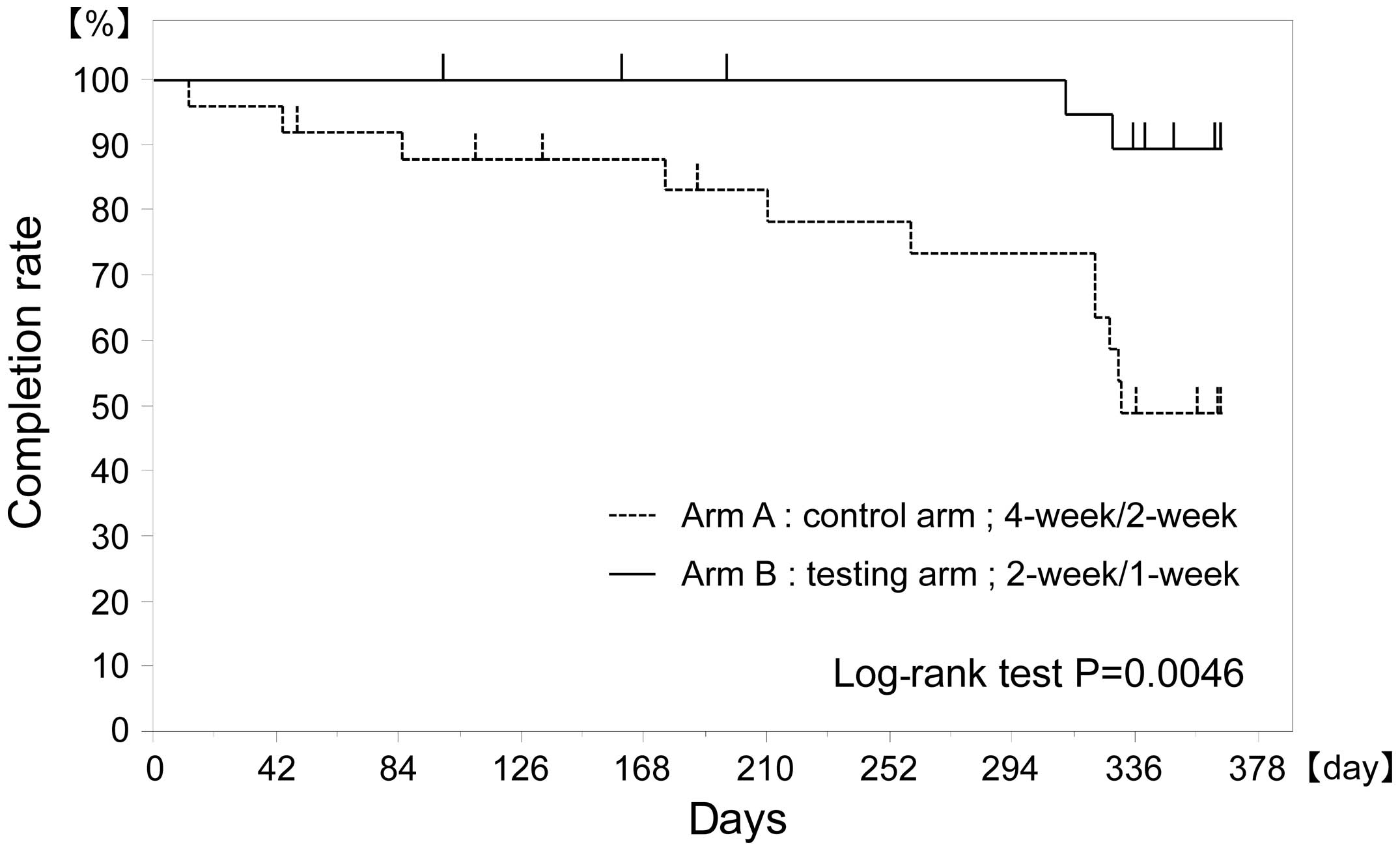Feasibility of oral administration of S-1 as adjuvant chemotherapy in gastric cancer: 4-week S‑1 administration followed by 2-week rest vs. 2-week administration followed by 1-week rest
- Authors:
- Published online on: February 2, 2015 https://doi.org/10.3892/mco.2015.500
- Pages: 527-532
Metrics:
Total
Views: 0 (Spandidos Publications: | PMC Statistics:
)
Total PDF Downloads: 0 (Spandidos Publications: | PMC Statistics:
)
Abstract
In 2006, the Adjuvant Chemotherapy Trial of S‑1 for Gastric Cancer (ACTS‑GC) demonstrated that S‑1 is an effective adjuvant therapy for gastric cancer. Following that study, S‑1 has been used as the standard adjuvant therapy for gastric cancer in Japan. However, the 1‑year completion rate was only 65.8% in the ACTS‑GC study and feasibility remains a critical issue. we conducted a study to evaluate the feasibility of 2 weekly administration regimens of S‑1 as adjuvant chemotherapy in gastric cancer. The criteria for eligibility included histologically proven stage II (excluding T1), IIIA or IIIB gastric cancer with D2 lymph‑node dissection. The patients were randomly assigned to either arm A (S‑1 administration for 4 weeks followed by 2 weeks of rest) or arm B (S‑1 administration for 2 weeks followed by 1 week of rest). In each arm, treatment was continued for 12 months unless recurrence or severe adverse events were observed. The primary endpoint was feasibility (protocol treatment completion rate). The secondary endpoints were safety, relapse‑free survival and overall survival. A total of 47 patients were assigned to arms A or B between May, 2008 and February, 2010. During the first interim analysis, the protocol treatment completion rates in arms A and B were 83 and 100%, respectively, at 6 months and 49 and 89%, respectively, at 12 months (P=0.0046). Therefore, S‑1 administration for 2 weeks followed by 1 week rest was more feasible as adjuvant chemotherapy in gastric cancer. Grade 3 adverse events in arm A included fatigue (8.0%), anorexia (8.0%), nausea (4.0%), vomiting (4.0%) and hand‑foot syndrome (4.0%), whereas none were observed in arm B. There were no reported grade 4 adverse events in either arm. In conclusion, the 2‑week S‑1 administration followed by 1‑week rest regimen appears to be a more feasible oral administration regimen for S‑1 as adjuvant chemotherapy in gastric cancer.











